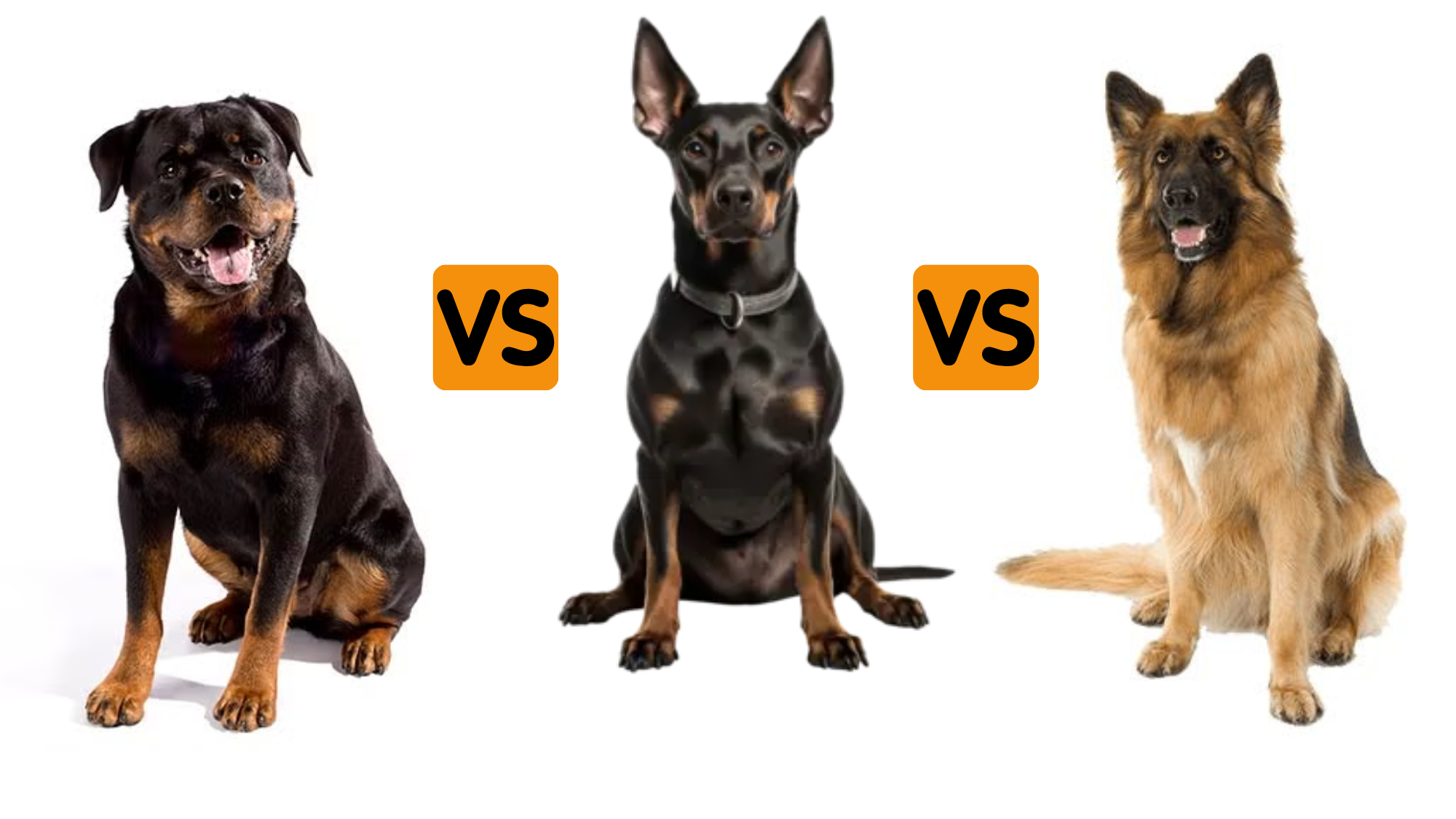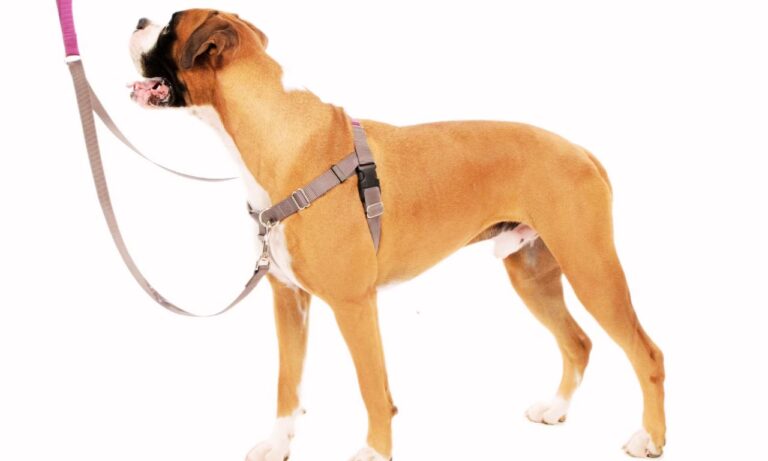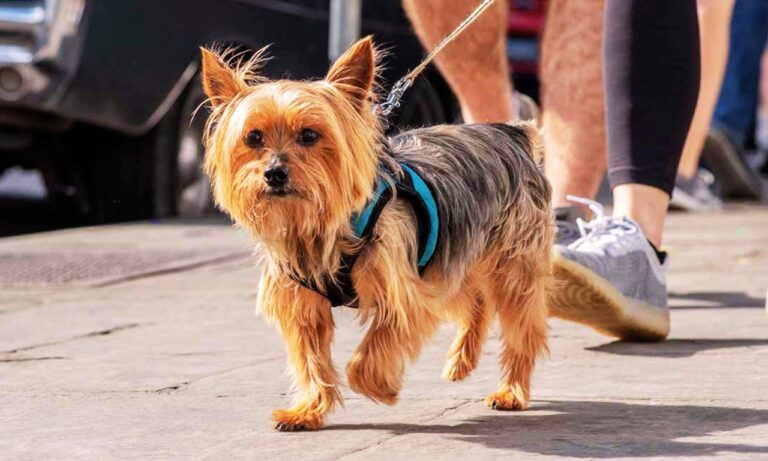Rottweiler vs Doberman vs German Shepherd: Choosing the right protection dog means weighing power, intelligence, and loyalty. Rottweilers, Dobermans, and German Shepherds are three of the world’s most respected working breeds — trusted by families, military units, and law enforcement agencies alike.
But they aren’t the same in how they grow, think, or perform. This guide breaks down every important difference: size, temperament, training difficulty, bite force, and lifestyle fit.
Whether you’re a prospective owner or a handler deciding on a working dog, understanding how these breeds compare could help you make the best match for your home or duty. To find the perfect fit, learn more about what size collar for a Bichon, ensuring your dog’s comfort and safety.
Blog Highlights
ToggleRottweiler vs Doberman vs German Shepherd: Summary Chart
| Trait | Rottweiler | Doberman | German Shepherd |
| Height | 24–27 in | 26–28 in | 24–26 in |
| Weight | 110–130 lbs | 75–100 lbs | 75–90 lbs |
| Bite Force | 328 PSI | 228 PSI | 238–291 PSI |
| Speed | 25 mph | 35 mph | 30 mph |
| Intelligence | High | Very High | Very High |
| Energy | Medium | Very High | High |
| Trainability | Moderate | High | Very High |
| Lifespan | 8–10 yrs | 10–13 yrs | 9–12 yrs |
| Family Suitability | Good | Excellent (experienced homes) | Excellent |
| Protection Rating | Very High | High | High |
Rottweiler vs Doberman vs German Shepherd Size and Structure
When it comes to sheer size and strength, the Rottweiler dominates. This breed is a muscular powerhouse with a compact but heavyset body designed for pulling carts, driving cattle, and protecting property.
Rottweiler Size
Males: 110–130 lbs, 24–27 inches tall
Females: 80–100 lbs, 22–25 inches tall
Doberman Size
Males: 75–100 lbs, 26–28 inches tall
Females: 60–90 lbs, 24–27 inches tall
German Shepherd Size
Males: 75–90 lbs, 24–26 inches tall
Females: 60–75 lbs, 22–24 inches tall
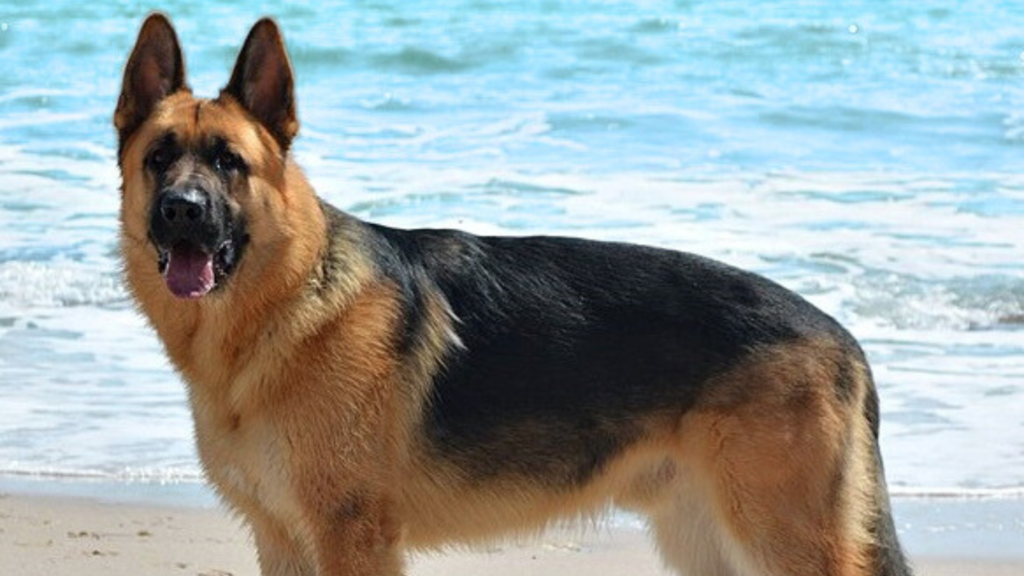
Rottweilers are heavier and denser, with thicker bones and broader chests. Dobermans, on the other hand, are more agile — tall, sleek, and lean with a tighter muscle structure. German Shepherds are balanced between the two — athletic yet powerful, with slightly sloped backs and longer torsos.
Discover the ideal option by exploring what is the best collar material for a Bichon Frise to ensure your pet’s comfort and durability.
Rottweiler vs Doberman vs German Shepherd Growth and Maturity
All three breeds grow rapidly in their first year, but their full mental and muscular maturity takes longer. Here’s how they compare:
Rottweiler Growth Timeline
- 6 months: ~65 lbs
- 1 year: ~90 lbs
- Fully grown by 2.5 years
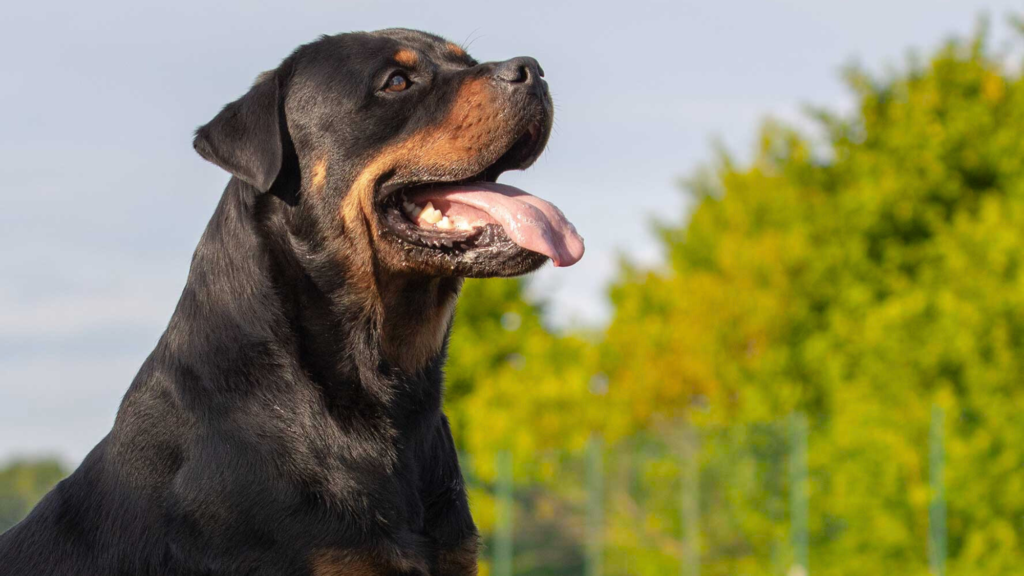
Doberman Growth Timeline
- 6 months: ~55 lbs
- 1 year: ~75 lbs
- Fully grown by 18–24 months
German Shepherd Growth Timeline
- 6 months: ~60 lbs
- 1 year: ~75 lbs
- Fully grown by 2 years
Rottweilers take the longest to fully develop — especially males. Their chest broadens well into year three. Dobermans, being naturally leaner, reach their adult form faster. German Shepherds fill out by age two, especially in the chest and shoulders.
Rottweiler vs Doberman vs German Shepherd Temperament and Personality
Temperament matters more than looks when choosing a lifelong companion. While all three are protective, their personalities serve different types of homes and handlers.
Rottweiler Temperament
- Calm, confident, territorial
- Loyal to the core but needs firm leadership
- Wary of strangers but affectionate with family
- Low reactivity if properly socialized
Rottweilers are stoic and watchful. They don’t bark without cause and are generally calm indoors. They thrive in stable, confident homes and can be surprisingly gentle with children when raised properly.
Doberman Temperament
- Alert, energetic, intuitive
- Velcro dogs — bond tightly with one person
- Highly sensitive and emotionally responsive
- Natural guardian instincts — often anticipates threats before they occur
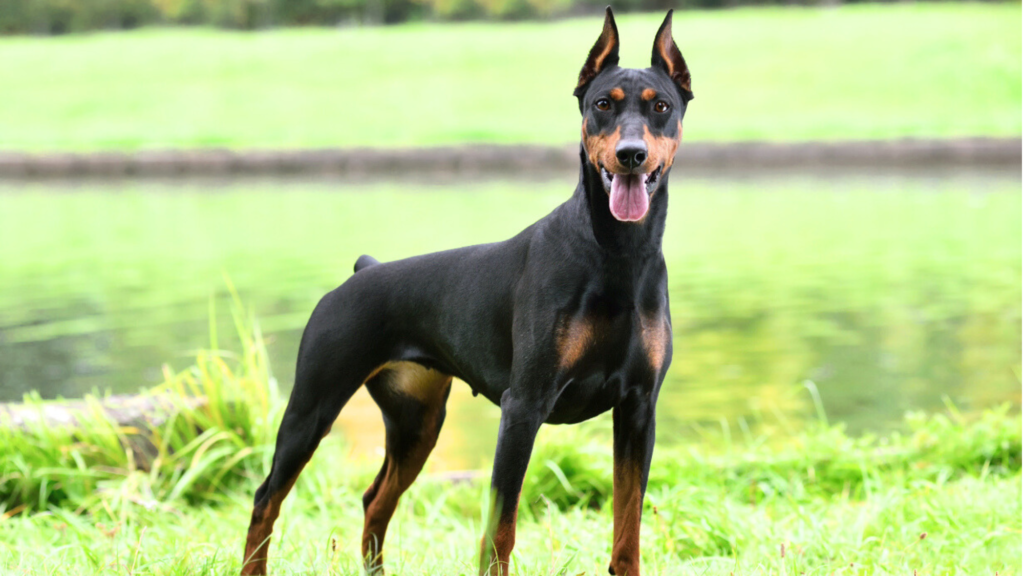
Dobermans are incredibly loyal but require mental stimulation. They’re not couch potatoes and need an outlet for their energy. Their emotional intelligence makes them protective without being unnecessarily aggressive. The American Staffordshire Terrier’s coat type is short, sleek, and easy to maintain with regular brushing.
German Shepherd Temperament
- Courageous, obedient, balanced
- Ideal for families or dual-purpose work
- Intelligent enough to learn 100+ commands
- Naturally social with proper early training
The German Shepherd is the most balanced of the three. It adapts to both work and play, remains calm under pressure, and bonds with the whole family — making it a top pick for multipurpose households.
Rottweiler vs German Shepherd vs Doberman Intelligence and Trainability
All three breeds are highly intelligent and trainable, but their learning styles differ.
Training Difficulty (Scale: 1 Easy – 5 Hard)
- Rottweiler: 3.5 – Needs consistent firmness
- Doberman: 2 – Extremely fast learner, eager to please
- German Shepherd: 1.5 – Most versatile and easy to train
Rottweilers respond best to consistent, structured training. They’re not as forgiving of owner mistakes and need confident handlers. Their slow maturity means patience is key.
Dobermans learn commands faster than almost any breed. However, their sensitivity means harsh training can backfire. Positive reinforcement works best.
German Shepherds are the gold standard for obedience training. Their adaptability, focus, and eagerness to work make them excel in police, military, and guide work worldwide.
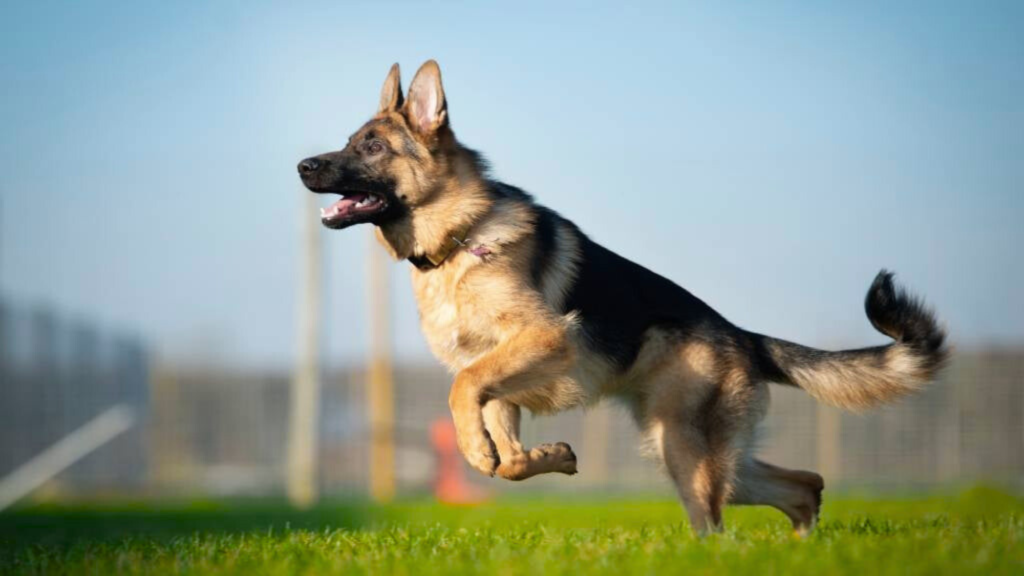
Rottweiler vs German Shepherd vs Doberman Bite Strength and Protection Skills
Here’s where raw power comes into play. While all three are capable protectors, they express that strength in different ways.
Estimated Bite Force (PSI)
- Rottweiler: 328 PSI
- German Shepherd: 238–291 PSI
- Doberman: 228 PSI
Rottweilers have one of the strongest bites of any domestic dog. They’re formidable in physical confrontations. German Shepherds follow with a crushing but more controlled bite. Dobermans, while having slightly less jaw power, compensate with precision and speed.
Protection Suitability
- Rottweiler: Excellent for personal property protection
- Doberman: Excellent for personal and close-proximity protection
- German Shepherd: Excellent for dual-purpose protection and obedience
Rottweilers are natural deterrents — their sheer presence often prevents problems. Dobermans are perfect for handlers needing personal protection in urban settings. German Shepherds shine in security patrols, scent detection, and public safety.
Rottweiler vs German Shepherd vs Doberman Speed and Agility
While Rottweilers bring strength, Dobermans and German Shepherds bring speed and agility. If you’re considering performance in motion, here’s the breakdown:
Top Speeds
- Rottweiler: ~25 mph
- Doberman: ~35 mph
- German Shepherd: ~30 mph
Dobermans lead in acceleration and top speed. Their build is aerodynamic and explosive. German Shepherds are agile and fast but also enduring — capable of running, jumping, and maneuvering for long shifts. Rottweilers lag in sprint speed but make up for it in raw force.
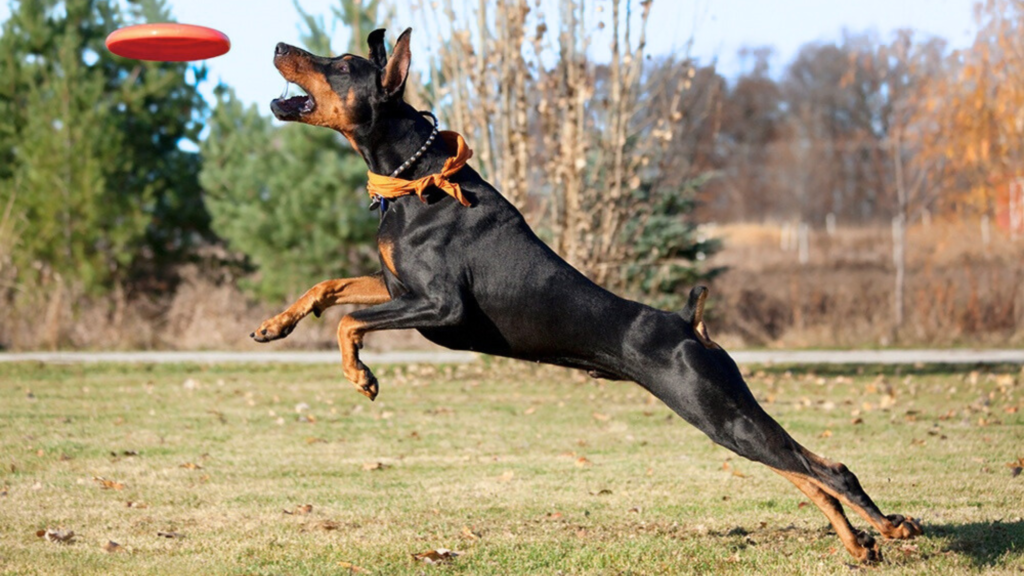
The best collar size for an American Staffordshire Terrier ensures a comfortable and secure fit for your dog during walks and training.
Doberman vs Rottweiler vs German Shepherd Energy Levels and Exercise Needs
Energy requirements can make or break the suitability of a breed for your lifestyle.
Daily Exercise Recommendations
- Rottweiler: 60–90 minutes of structured activity
- Doberman: 90–120 minutes, including mental stimulation
- German Shepherd: 60–120 minutes, ideally work-oriented
Dobermans are high-octane. Without proper outlets, their energy can turn into anxiety or destructive behavior. German Shepherds thrive on working tasks — obedience drills, fetch, search games. Rottweilers are more laid-back but still need structured play and training to avoid boredom.
Doberman vs Rottweiler vs German Shepherd Health and Lifespan
Each breed comes with its own genetic health risks and average lifespan.
Rottweiler
- Common Issues: Hip dysplasia, cancer (osteosarcoma), heart disease
- Lifespan: 8–10 years
Doberman
- Common Issues: Dilated cardiomyopathy, hypothyroidism, Wobbler syndrome
- Lifespan: 10–13 years
German Shepherd
- Common Issues: Hip and elbow dysplasia, degenerative myelopathy, bloat
- Lifespan: 9–12 years
Dobermans typically live the longest but are prone to cardiac issues. Rottweilers have the shortest average lifespan due to size and cancer risk. German Shepherds are durable but need joint monitoring, especially with age.
To find out the what size collar for an Affenpinscher, ensure you measure your dog’s neck correctly for a perfect fit.
Doberman vs Rottweiler vs German Shepherd Living Environment: Apartment or Yard?
Not every breed suits every home.
Rottweiler
- Best with a yard or farm
- Quiet indoors, needs secure fencing
- Okay with kids if raised properly
Doberman
- Can adapt to apartments with structured exercise
- Needs indoor companionship
- Not ideal left alone all day
German Shepherd
- Versatile for house, yard, or working environments
- Needs a job or active routine
- Tolerates a variety of climates well
All three need socialization. Rottweilers do best in space. Dobermans need near-constant interaction. German Shepherds are the most adaptable if their exercise needs are met.
Final Verdict: Which Breed is Best for You?
- Choose the Rottweiler if you want a strong, quiet guardian who bonds deeply with family and provides unmatched protection. They’re ideal for homes with space and confident leadership.
- Go for the Doberman if you’re looking for a sleek, loyal, and emotionally intelligent dog that will stay by your side. They thrive in active homes and do best with daily engagement.
- Pick the German Shepherd if you want the all-rounder — smart, balanced, and incredibly trainable. They fit into working roles, families, and diverse home environments with ease.
Rottweiler vs Doberman vs German Shepherd: Each breed is remarkable. The best one for you? The one whose energy, temperament, and care needs match your life. For a step-by-step guide on how to wear collar to an Affenpinscher, check out this detailed article to ensure a comfortable and secure fit for your dog.

